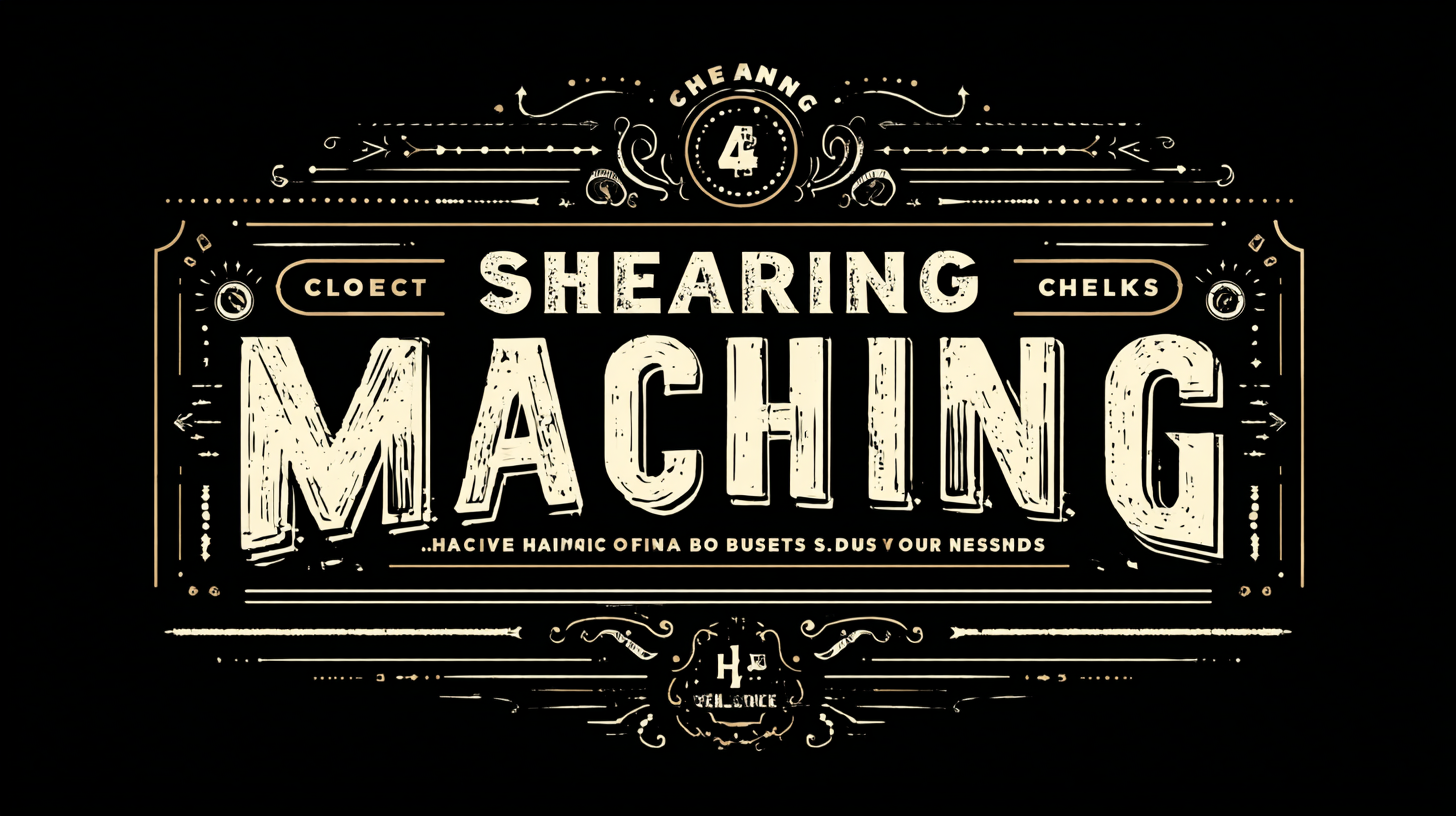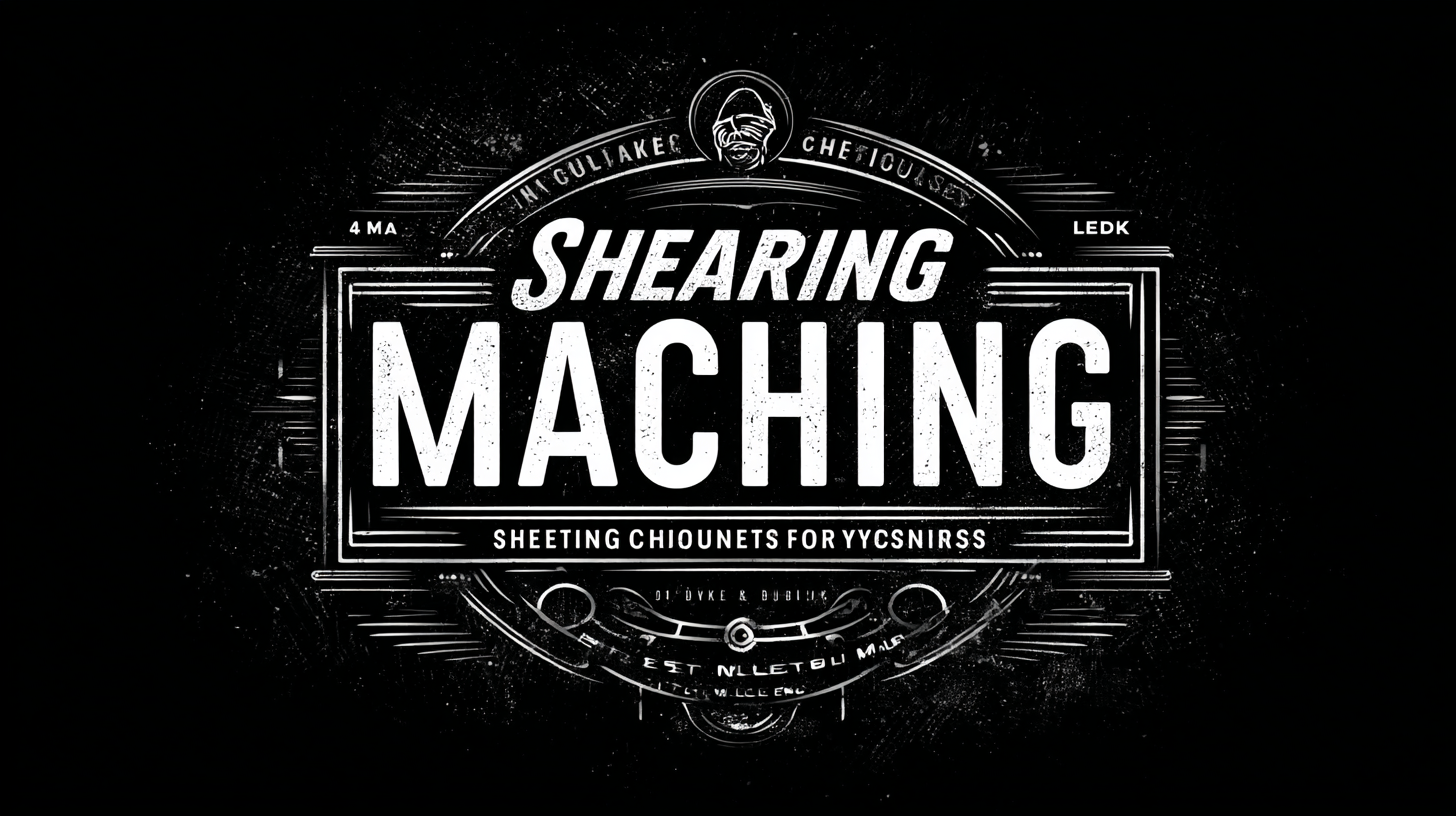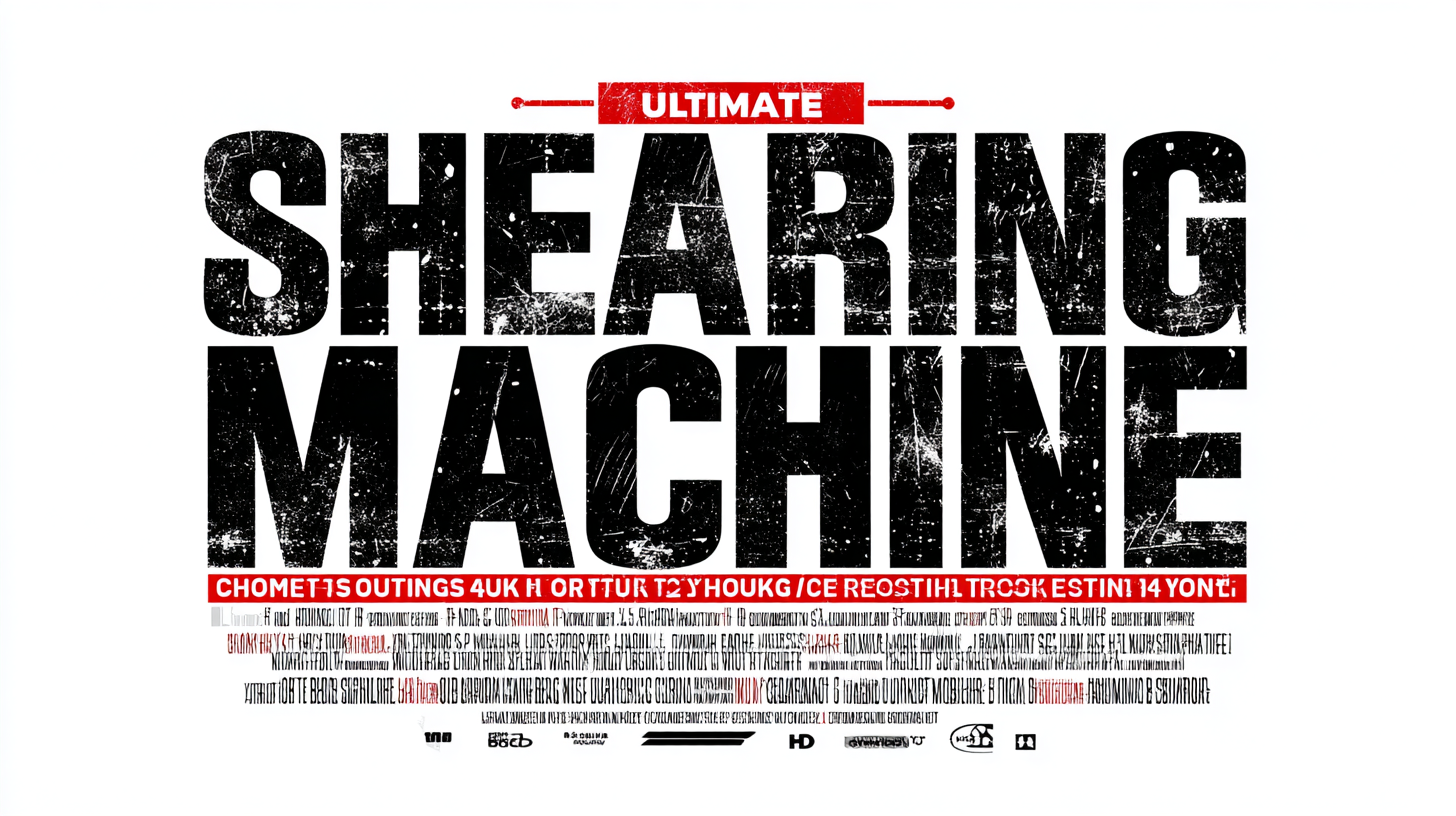
Ultimate Checklist for Choosing the Best Shearing Machine for Your Business Needs
When selecting the right shearing machine for your business needs, it's essential to approach the process with careful consideration and strategy. A shearing machine can significantly impact your operational efficiency, product quality, and overall profitability. In this ultimate checklist, we will explore key factors that should guide your decision-making, including machine specifications, production capacity, safety features, and maintenance requirements. Additionally, understanding the different types of shearing machines available on the market will help you tailor your choice to better suit the unique demands of your business. Whether you're in the manufacturing, textile, or metalworking industries, this comprehensive guide aims to equip you with the knowledge necessary to select a shearing machine that not only meets your current needs but also positions your business for future growth and success.

Key Factors to Consider When Selecting a Shearing Machine for Your Operations
When selecting a shearing machine for your operations, there are several key factors to consider to ensure that you choose the best fit for your business needs. First and foremost, gauge the material you’ll be working with. Different materials, such as metal, fabric, or plastic, have distinct thicknesses and properties that require specific blade types and cutting mechanisms. Understanding the specific requirements of your materials will help narrow down your options and boost efficiency in the long run.
Another crucial factor is the machine's capacity and speed. Assess your production volume and the speed at which you need the shearing machine to operate. A machine that can handle higher volumes with a faster cutting speed can significantly enhance your operational efficiency. Additionally, consider the mobility and space requirements of the machine. If your workspace is limited, a more compact model may be necessary, while larger operations may benefit from more robust, heavy-duty options. Be sure to evaluate both performance and practicality to ensure seamless integration into your business workflow.
Shearing Machine Selection Factors
Understanding Different Types of Shearing Machines and Their Applications
When choosing the best shearing machine for your business, it’s essential to understand the different types available and their specific applications. Shearing machines can generally be categorized into mechanical, hydraulic, and pneumatic models, each designed for various material thicknesses and cutting requirements. According to a recent industry report, mechanical shears are favored for their speed and efficiency in cutting sheet metals, while hydraulic machines are preferred for thicker materials, offering greater force and precision.
**Tips:** When selecting a shearing machine, assess the material types and thicknesses you'll be working with to ensure you choose a model that meets those requirements. It's also wise to consider the machine's ease of use and maintenance, as these factors can significantly influence productivity.
In addition to traditional shearing machines, advancements in technology have introduced CNC shearing machines, which provide enhanced control over cutting processes. This shift is supported by market data indicating that the CNC shearing equipment market is expected to grow at a CAGR of over 7% in the coming years, highlighting a trend towards automation in manufacturing environments.
**Tips:** Consider future scalability when investing in equipment; opting for machines that can be upgraded with additional features or that support different tooling can provide long-term value and flexibility for your business needs.
Ultimate Checklist for Choosing the Best Shearing Machine for Your Business Needs
| Type of Shearing Machine | Applications | Material Compatibility | Sheet Thickness Capacity | Features |
|---|---|---|---|---|
| Mechanical Shearing Machine | General fabrication, metalworking | Steel, Aluminum | Up to 10 mm | High-speed operation, durable |
| Hydraulic Shearing Machine | Metal shearing, heavy-duty jobs | Stainless Steel, Copper | Up to 25 mm | Automatic blade clearance adjustment |
| NC/CNC Shearing Machine | Precision shearing, complex shapes | Carbon Steel, Aluminum Alloy | Up to 20 mm | High accuracy, programmable controls |
| Swing Beam Shearing Machine | Sheet metal processing | Sheet Metal, Mild Steel | Up to 6 mm | Easy maintenance, energy efficient |
Evaluating Performance Metrics: Blade Quality, Speed, and Precision in Shearing
When selecting a shearing machine, evaluating performance metrics such as blade quality, speed, and precision is paramount to ensuring it meets your business needs. The blade quality directly impacts the efficiency and longevity of the machine. Opt for machines with high-grade materials that retain sharpness longer and reduce friction, which can save costs in the long run. Remember to check for easy blade replacement features to enhance maintenance convenience.
Speed is another crucial metric that influences productivity. Choose a shearing machine that can operate at varying speeds to accommodate different materials and projects. This versatility allows you to optimize production without compromising quality. A good tip is to assess the machine’s speed in relation to its cutting capabilities; a faster machine is not always better if it results in inferior cuts or increased wear on the blades.
Precision is essential, especially when working on intricate designs or delicate materials. Look for machines equipped with advanced technology, such as laser guides or digital controls, that ensure clean, accurate cuts every time. A tip for achieving optimal precision is to invest in models that offer adjustable settings, enabling you to fine-tune your machine for specific tasks, leading to better overall results.

Budgeting for Your Shearing Machine: Initial Cost vs. Long-term Investment Returns
When considering the purchase of a shearing machine, it's crucial to evaluate not only the initial cost but also the potential long-term investment returns. According to a 2022 industry report by IBISWorld, businesses that invest in high-quality shearing machines can expect to see a return on investment (ROI) of up to 30% within the first three years of operation. This figure underscores the importance of choosing a machine that balances upfront costs with durability and efficiency.

Furthermore, a study conducted by the National Association of Manufacturers indicates that companies that prioritize quality machinery can reduce operational costs by 15% or more through improved productivity and reduced downtime. While a cheaper machine may seem appealing initially, the long-term benefits of a robust shearing machine can lead to significant savings and enhanced performance. Investing in a reliable machine not only ensures better output quality but also contributes to the overall profitability of your business in the competitive manufacturing landscape.
Compliance and Safety Standards: Ensuring Your Shearing Machine Meets Industry Regulations
When selecting a shearing machine for your business, understanding compliance and safety standards is paramount. The machinery must adhere to industry regulations set by organizations like OSHA and ANSI, which aim to minimize workplace hazards. According to a 2021 report from the U.S. Bureau of Labor Statistics, there were over 50,000 reported incidents involving mechanical equipment in manufacturing, highlighting the critical need for safety standards in shearing operations.
Furthermore, the presence of combustible dust in various industries can pose significant risks if not properly managed. The National Fire Protection Association (NFPA) estimates that dust-related incidents result in billions of dollars in property damage annually, emphasizing the importance of selecting shearing machines with features that mitigate these hazards. Machines equipped with appropriate dust collection systems and compliant with NFPA regulations can greatly reduce the chances of fire or explosion in the workplace.
Prioritizing compliance and safety helps ensure you not only meet legal requirements but also protect your workforce and investment.